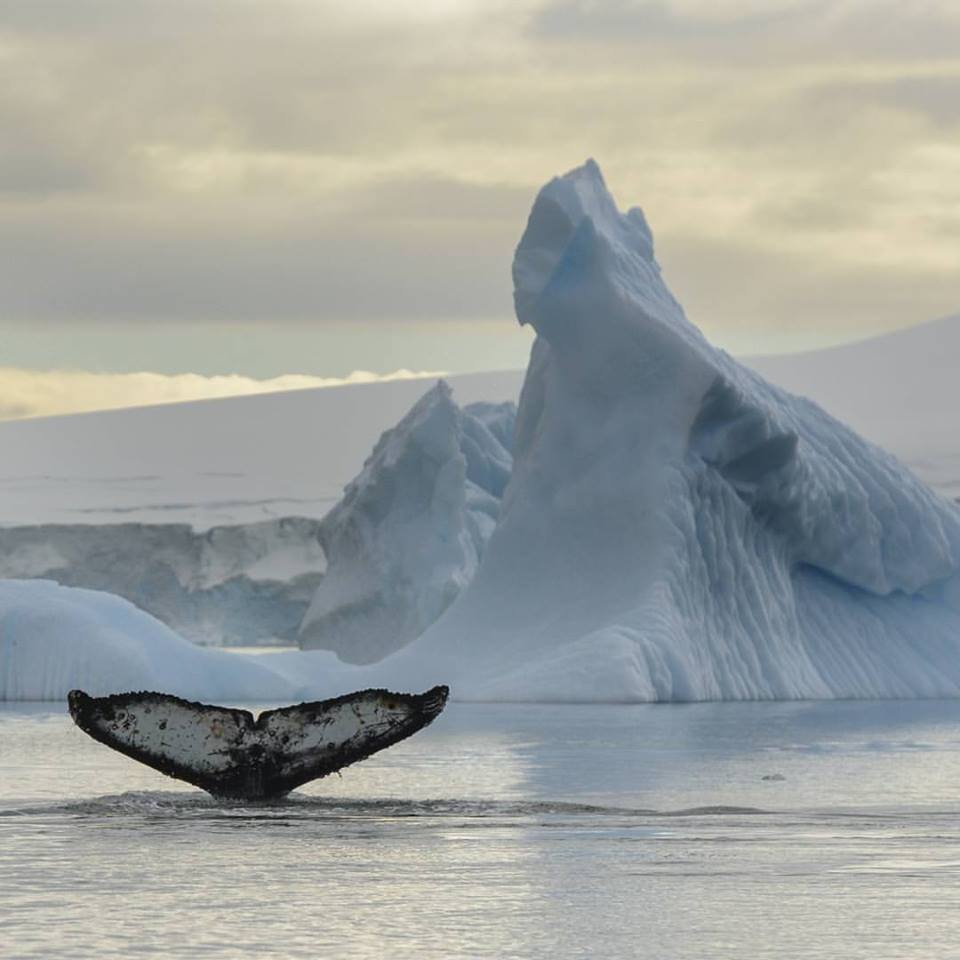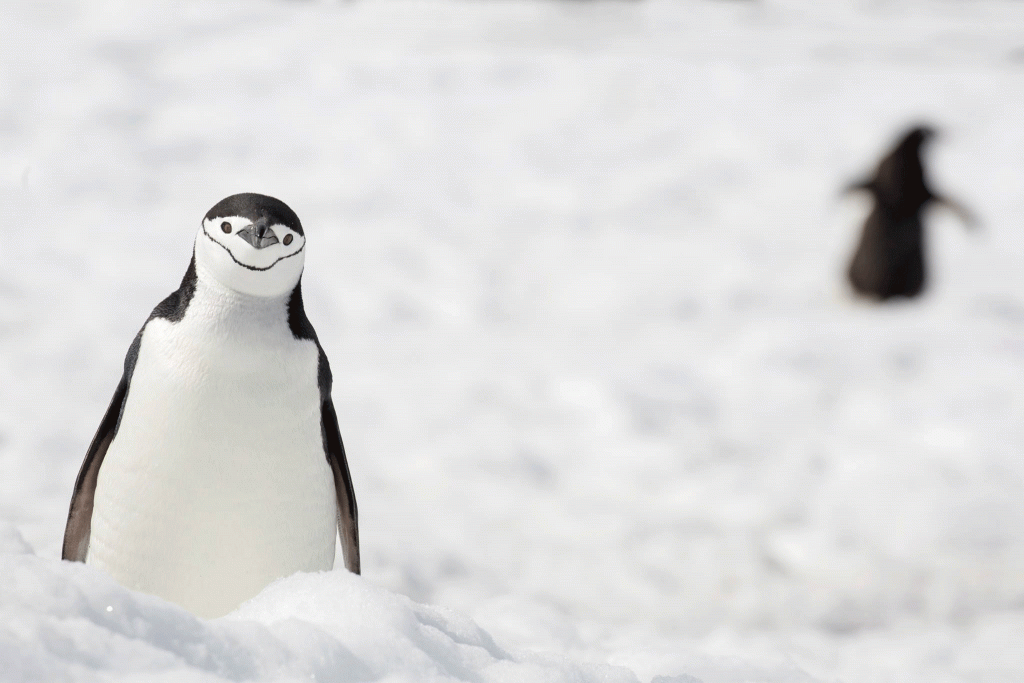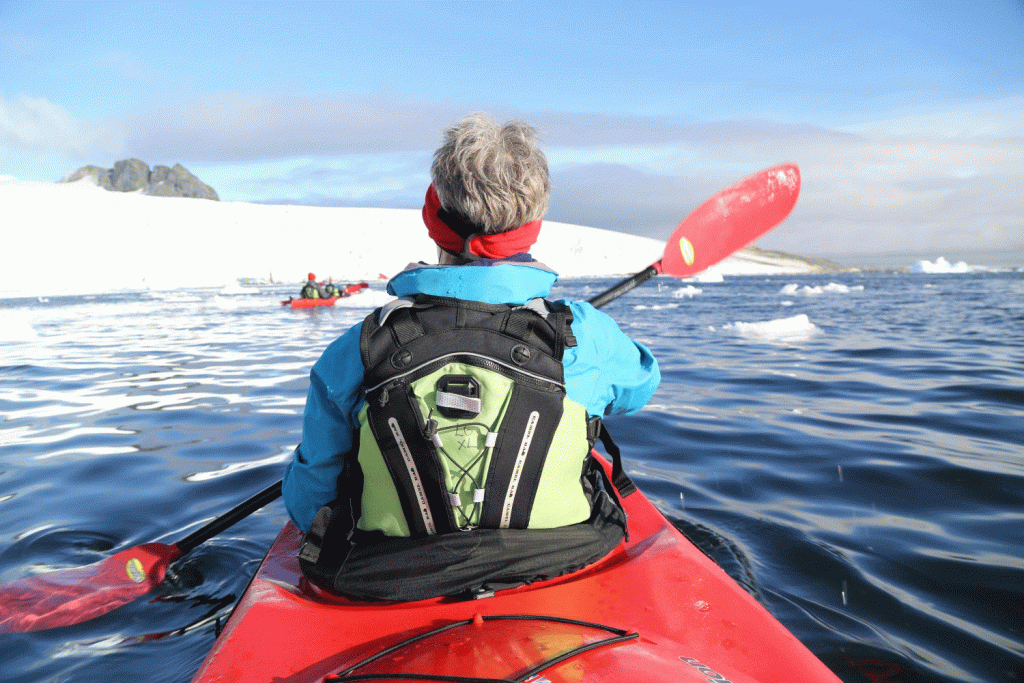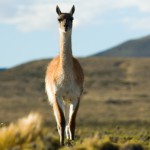
Best time to visit Antarctica
Firstly, it’s important to highlight that the Antarctica Expedition Cruises run from late October till March. This means, austral summer and a little bit of spring and autumn.
Among those months, the best time to travel to Antarctica will depend on your interest, considering the following factors:
- – Weather, daylight, and landscapes.
- – Wildlife you can see.
- – How south you can go.
Let’s have a look at it, month by month:
Antarctica’s Wildlife
Antarctica’s wildlife is rare. It belongs to a group of organisms whose features allow them to grow and develop in hostile environments that can be even deadly for humans. Harmful UV radiation, low temperatures, high salt, and low mineral concentration are just some of the conditions the continent is exposed to, and therefore its flora and fauna. This is the reason why its wildlife is one of the least diverse in the world. As a matter of fact, most of its animals migrate there for the summer season until winter arrives, when they leave again in the search of a more favorable environment.
The only animals to breed in mainland Antarctica during winter are the Emperor Penguins. Among the seasonal visitors we can find seals, albatrosses and around eight different species of penguins.
Most of the animals that can be seen in the Peninsula tend to be large as a result of the bitter cold they have to face. This is the case of whales, for example, which have adapted to reduce heat loss.
As for its flora, its diversity is also lower than in the rest of the world: from over 1000 fungi species that have been found in the continent, only around 20 are macroscopic. As for plants, the most abundant kind is algae – especially phytoplankton – which represents the basis of many of the continent’s food webs.
Best time to visit Antarctica
In this month-by-month guide, we will help you find out what is the best time to visit Antarctica for you. Needless to say, though, that this part of the world is so rich and unique that your visit will be unforgettable regardless of the period you choose.
November
November marks the beginning of the season. During this month, the continent is colder, which means sea ice is still very thick and its whiteness stands out. Icebergs are at its most impressive, and its spectacular formations welcome the first boats. The sky over it glows electric blue due to the start of noctilucent, or night-shining, cloud season in the Southern Hemisphere. You will love the amazing sunsets.
Visiting Antarctica in November presents the best chance to get closer to breeding elephant seals. Penguins are mating, and even though the chicks are not yet born, you can see the adults nesting and displaying courtship. Seals are also mating, and different seabirds can be seen flying over the Drake Passage. In case you hire an expedition to the Weddel Sea, you might see Emperor penguin colonies (this is not during a classic Antarctica cruise).
Weather is colder and daylight shorter, but perhaps that’s good for enjoying more sunsets. You can find better prices than in December, January, and February.
December
In December the whole situation starts to change: daylight hours are longer and temperatures hover above freezing. This is considered the best time to visit Antarctica, but it is also among the most popular. Summer starts this month, and weather conditions become favorable for seal pups and penguin chicks and whales. You will see the islands crowded with penguin chicks waiting for their parents to return with food. No matter how cold it is, you will melt with these cute characters.
The penguins start to hatch by mid of December; seals are breeding, and wildlife, in general, becomes more abundant and active. Days become longer, with more than 20 hours of daylight by the end of the month. The crispy outlines and big size of the icebergs still surprises the visitors.
From Christmas time till the end of January it’s the peak season, therefore you might expect higher rates than in other months. In a conclusion, it’s strongly recommended to make reservations at least 12 months in advance.
January
In January summer is at its peak and weather, at its warmest; temperatures often exceed 5 degrees Celsius. The more than 20 hours of daylight offer more time for exploring other corners of the Peninsula. This month the breakup of ice allows wider exploration and land expeditions, so the adventure becomes a bit more active. If you wish to visit Antarctica in January, you may want to book your trip well in advance, for this month is also one of the most popular.
Enjoy the views of the fluffy penguin chicks roaming around!
February
February arrives with the golden opportunity to sail far south and get closer to the polar circle. The
favorable ice conditions after the heat of December and January make it easier to reach spots on the region otherwise inaccessible. If you are into wildlife, this might be the best time to visit Antarctica for you because of the abundance of wildlife activity: leopard seals, Penguins, Humpback whales, and plentiful birdlife. This is also when whales return to Antarctic waters.
If you’re of the adventurous type, this might be the best time to visit Antarctica for you too. You won’t want to miss the chance to go kayaking among icebergs and glacial ice dating back 30,000 years. This breathtaking experience will undoubtedly rank among your top life adventures. You will feel pocket-size rowing next to Antarctica’s icy deserts.
March
March marks the end of the travel season. Even if the temperature drops considerably and days begin to be shorter, there is still a great deal of adventure to embark on. During this month, you will fall in love with the stunning, unexpected colors of nature and Antarctica’s unique features.
This is the best time of the year to visit Antarctica to witness firsthand the change in the landscape due to certain natural processes. One of the highlights is the presence of Chlamydomonas nivalis, the unicellular algae responsible for causing the phenomenon known as “watermelon snow”. When the algae is activated by the seasonal rise in temperature, they create a reddish color in the snow. Yes, we are talking about pink snow. Can you even picture the surface of the glaciers covered in pink?
Traveling to Antarctica is so unique that it is unlike any other trip you’ll ever take. A once-in-a-lifetime experience that will change your way of seeing the world.
It’s very likely that after – or before – your trip to Antarctica, you will add to your trip some destinations within South America.
Other facts to consider
The Antarctic season matches with the high season in Patagonia, particularly for hiking and outdoor experiences. However, there are some tips that may help you to improve your experience:
- – During November, before going to Antarctica to feed, Southern Right Whales can be seen in Peninsula Valdes (Patagonia Argentina). You can make a short stopover there, and fly directly to Ushuaia to embark on your cruise. Peninsula Valdés is also home to other species such as Orcas (mainly the second half of March), Penguins, Sea Elephants, etc.
- – We suggest you to stay some time in Ushuaia if you’re cruise departs (or arrives) from there. If you’re keen on seeing more penguins, you might find a family of King Penguins (not in Antarctica) that live among thousands of Magellan (also not in Antarctica) and Gentoo.
- – If you arrive or depart from Punta Arenas, we suggest you to visit National Park Torres del Paine (5 hours away). If you like hiking, it will be a paradise, and you can even combine it with El Chaltén in Argentina (Fitz Roy & Torre Mounts).
- – March is better for photography. Just keep it in mind if that’s your main purpose.
- – You can also combine your cruise with other destinations, such as Buenos Aires, Iguazu Falls, Mendoza, Salta, Jujuy, etc.
Need help planning your trip?
We offer different ways of visiting Antarctica. As a kick-off, we invite you to take a look at some of our Antarctic Expeditions, such as the Classic Antarctica Cruise or the Flight to Antarctica & Cruise. Get in touch, and let’s plan your next beautiful journey together!
0



















